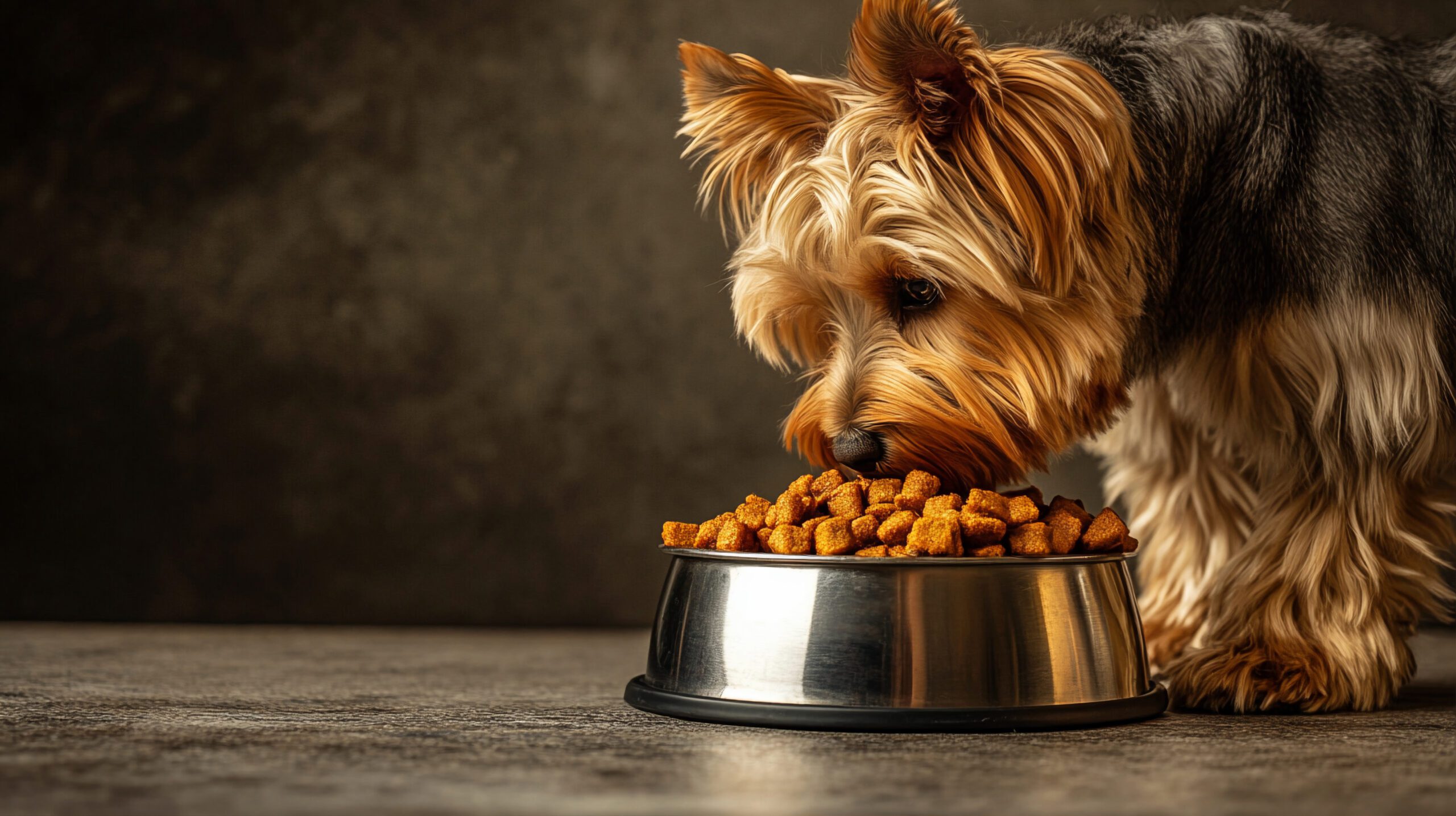Introduction to Dog Nutrition
Just like people, dogs need a balanced diet to stay healthy, strong, and full of energy. What Food Do Dogs Eat affects everything from their coat and weight to their immune system and lifespan. A proper diet gives them the right mix of protein, fats, carbs, vitamins, and minerals to keep their body running smoothly.
Many owners assume all dogs can eat the same food, but that’s not true. A dog’s nutritional needs depend on age, breed, and activity level. For example, puppies need more protein and fat to grow, while older dogs need fewer calories to prevent weight gain. Size also matters—a tiny Chihuahua won’t have the same diet as a massive Great Dane.
Feeding your dog isn’t just about filling the bowl—it’s about making sure every meal supports their long-term health.
Why Balanced Nutrition Matters for Dogs
A balanced diet is the key to keeping your dog healthy. Without it, your pup could end up with dull fur, weak bones, or digestion problems. Proteins build and repair muscles, fats provide energy and help absorb vitamins, and carbs give fuel for everyday activity. Vitamins and minerals keep the immune system strong and support overall function.
Think of your dog like a car—it needs the right fuel to run well. Too much or too little of one nutrient can throw things off balance. Too much fat can lead to obesity, while not enough calcium can weaken bones.
Dogs may have evolved from wolves, but their diets have changed a lot. While wolves eat raw meat, modern dogs have adapted to enjoy meats, grains, and vegetables. Protein is still important, but it’s just one part of what they need.
When buying dog food, look for products labeled “complete and balanced” by the Association of American Feed Control Officials (AAFCO). That label means the food meets essential nutrition standards for dogs at specific life stages.
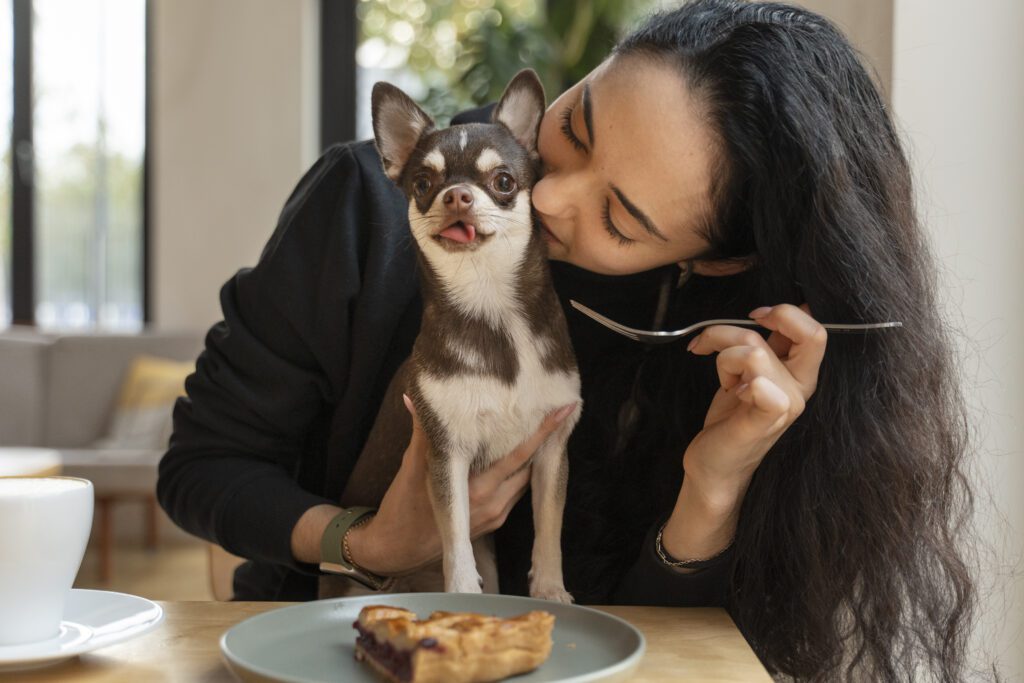
Types of Food Dogs Can Eat
1. Commercial Dog Food (Dry, Wet, and Semi-Moist)
Most pet owners go with commercial dog food, which comes in three main types—dry kibble, wet food, and semi-moist.
- Dry Kibble: Affordable, easy to store, and good for dental health. Just make sure the ingredients are high quality.
- Wet Food: Tasty and hydrating, great for picky eaters or dogs that don’t drink much water. It’s pricier and spoils faster once opened.
- Semi-Moist Food: Less common and often high in sugar or preservatives, so it’s better as an occasional option.
Always check the label—real meat should be one of the first ingredients, not “by-products” or “animal digest.”
2. Homemade Dog Food
More people are cooking for their dogs to avoid fillers and preservatives. Homemade food gives you full control over ingredients, letting you use fresh meat, grains, and veggies.
Still, it takes careful planning. Dogs need specific nutrient ratios, and missing key vitamins or minerals can cause health problems. For example, too much liver can cause vitamin A toxicity, and too little calcium can weaken bones.
A balanced homemade diet might include:
- Lean meats like chicken, beef, or turkey
- Brown rice or quinoa
- Veggies like carrots, spinach, or peas
- A little olive or fish oil for healthy fats
Always check with your vet or a canine nutritionist before switching to homemade meals to make sure your recipes are balanced.
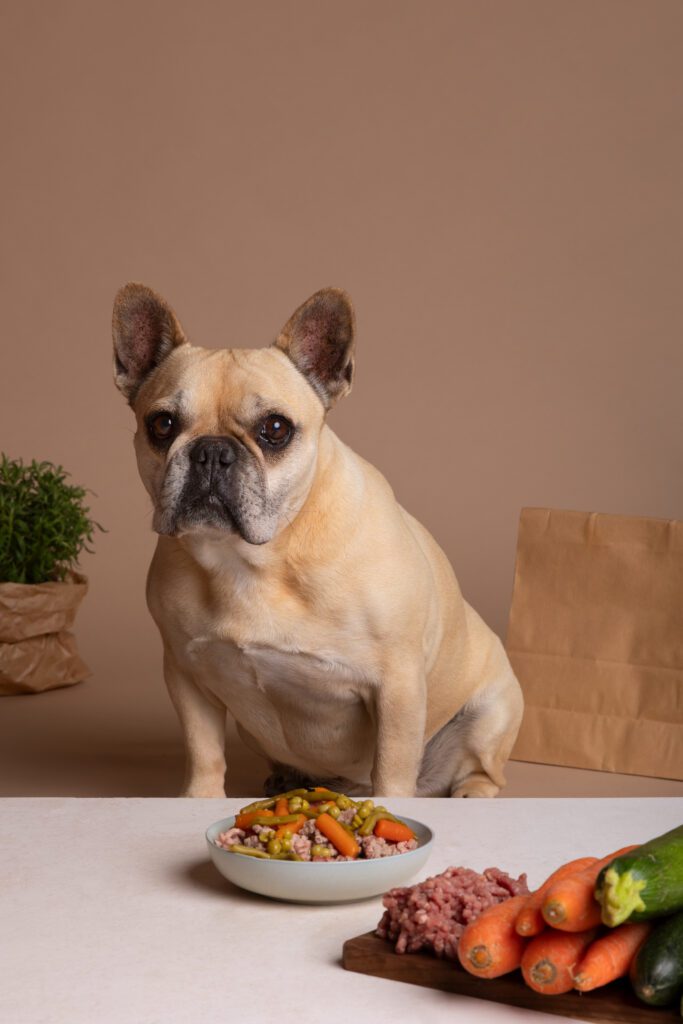
3. Raw Food Diets for Dogs
The raw diet (also called the BARF diet, short for Biologically Appropriate Raw Food) focuses on feeding raw meats, bones, fruits, and veggies—similar to what dogs’ ancestors ate. Fans say it leads to shinier coats, better energy, and improved digestion.
However, raw feeding has risks. Raw meat can carry bacteria like Salmonella or E. coli, which can harm both dogs and humans. Bones can also cause choking or internal injuries.
If you try raw feeding, handle everything carefully and make sure the meals are well-balanced. A typical raw diet might include:
- Raw chicken or beef (unseasoned)
- Ground bones for calcium
- Raw eggs
- Chopped fruits and veggies
Some vets recommend mixing raw and cooked foods to reduce risks while still offering variety.
Human Foods That Are Safe for Dogs
Dogs love our food—and it’s tough to ignore those begging eyes—but not everything we eat is good for them. Luckily, there are plenty of safe and healthy human foods you can share.
Fruits Dogs Can Eat
Fruits make excellent treats packed with vitamins and antioxidants.
- Apples: Great for breath, full of vitamins A and C (remove the seeds and core).
- Bananas: Full of potassium and fiber—just feed sparingly due to sugar.
- Blueberries: Loaded with antioxidants for cell health.
- Watermelon: Hydrating and refreshing—make sure it’s seedless.
- Strawberries: High in vitamin C and help keep teeth white.
Avoid grapes, raisins, and cherries, which can be toxic and cause kidney failure.
Vegetables Dogs Can Eat
Veggies are great for digestion, weight control, and overall health.
- Carrots: Crunchy and good for dental health.
- Green beans: Low in calories, high in fiber.
- Sweet potatoes: Gentle on the stomach and packed with nutrients.
- Spinach: Healthy in small amounts.
- Pumpkin: Helps with digestion and relieves constipation.
Lightly cook harder veggies so they’re easier to digest.
Proteins and Grains Safe for Dogs
Dogs are meat eaters but can handle some grains too.
Proteins:
- Chicken, turkey, beef, lamb, fish (salmon, sardines), and cooked eggs
Grains:
- Brown rice, oatmeal, and quinoa—always cooked and unseasoned
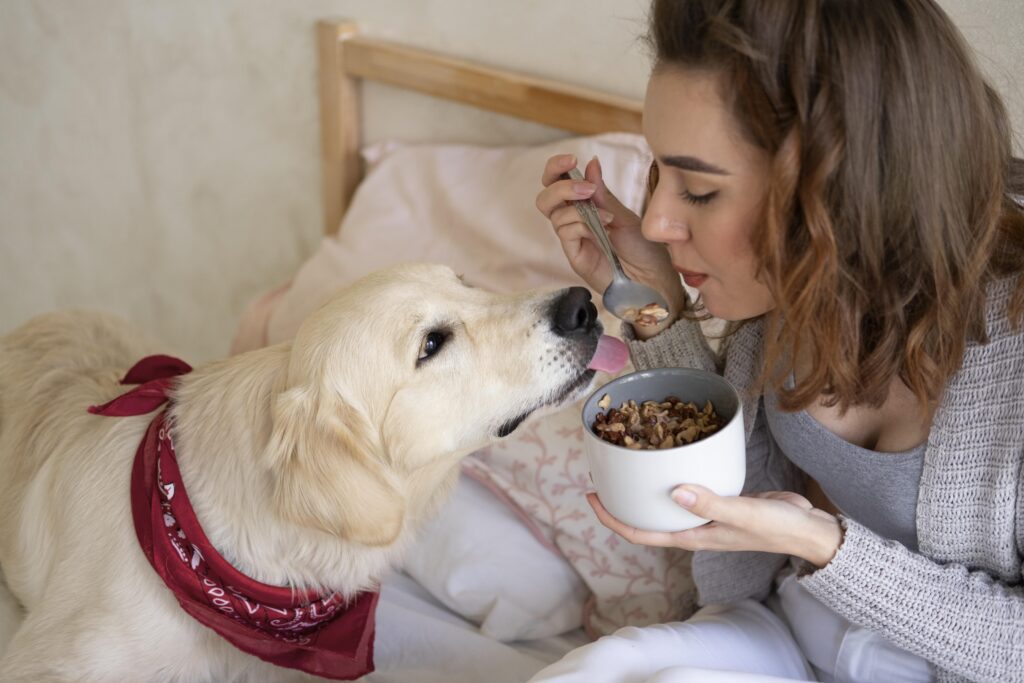
Foods Dogs Should Never Eat
Some human foods can be deadly for dogs, even in small amounts.
Avoid these:
- Chocolate: Contains theobromine, which is toxic.
- Grapes and raisins: Can cause kidney failure.
- Onions and garlic: Damage red blood cells.
- Avocado: Contains persin, which can upset digestion.
- Caffeine and alcohol: Extremely dangerous for the heart and nervous system.
- Xylitol: An artificial sweetener that can cause liver failure.
Keep these foods out of reach at all times.
Common Household Ingredients That Are Dangerous
Some everyday items can harm your dog too:
- Raw yeast dough: Expands in the stomach and causes pain.
- Cooked bones: Can splinter and puncture the digestive tract.
- Salt and salty snacks: Too much sodium causes dehydration or poisoning.
- Fat trimmings: Can trigger pancreatitis, a painful condition.
If your dog eats something toxic, call your vet or an emergency pet poison hotline immediately.
Tips for Feeding Your Dog Properly
Feeding your dog right means paying attention to portions, timing, and what’s actually in their food.
Portion Control and Feeding Schedules
Overfeeding is a common mistake. Too much food leads to obesity and health problems.
General guide:
- Puppies: 3–4 small meals daily
- Adults: 2 meals a day
- Seniors: 1–2 smaller meals a day
Use a measuring cup and follow the feeding chart on the bag as a baseline. Adjust based on your dog’s activity level and your vet’s advice. Keep meal times consistent—dogs do best on a routine.
Reading Dog Food Labels
Knowing how to read labels helps you make smarter choices.
- Ingredients: The first should be real meat, not “by-products.”
- Guaranteed Analysis: Lists protein, fat, fiber, and moisture percentages.
- AAFCO Statement: Shows the food meets nutritional standards.
- Avoid Additives: Stay away from artificial colors or preservatives like BHA and BHT.
Quality ingredients matter more than brand or price.
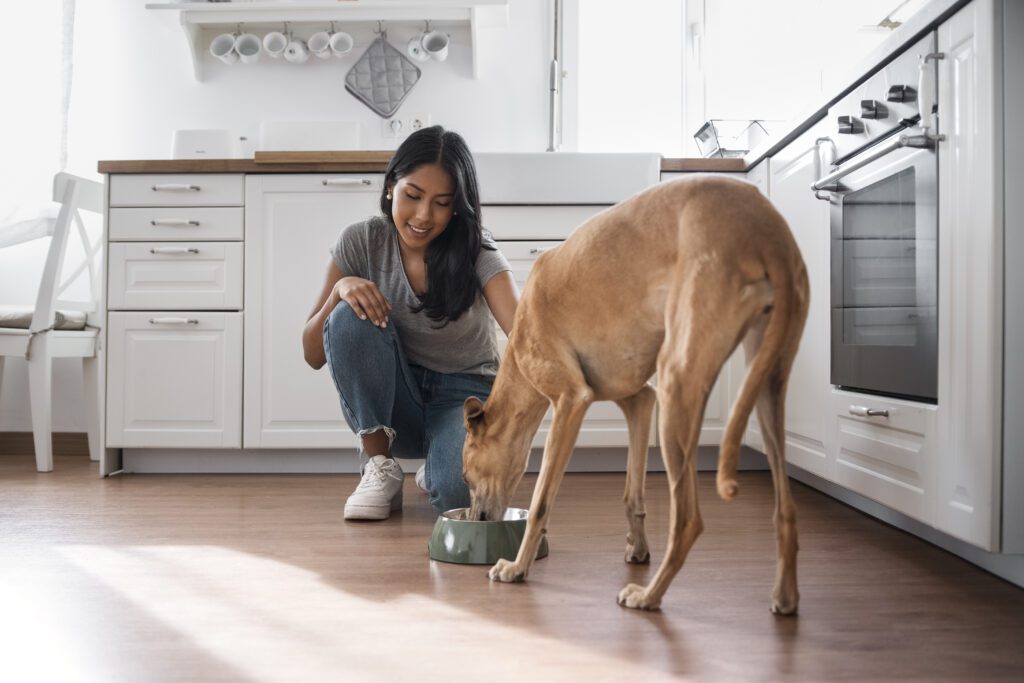
Consulting a Veterinarian for Diet Plans
Every dog is different. If your dog has allergies, stomach issues, or other conditions, talk to your vet about a personalized diet.
Vets can:
- Recommend prescription or specialized diets
- Suggest supplements for skin, joints, or coat health
- Help you safely transition to a new food
Avoid sudden diet changes—they can upset your dog’s stomach or cause deficiencies.
Conclusion
Feeding your dog properly is one of the best things you can do for their health and happiness. A balanced diet full of protein, healthy fats, vitamins, and minerals helps them live longer and feel better. Whether you feed commercial, homemade, or raw food, make sure it meets their needs and avoid anything toxic.
Healthy eating = a happy, healthy dog.
FAQs
1. Can dogs eat rice every day?
Yes, cooked brown or white rice is fine in moderation. Serve it plain and mix it with protein.
2. Are eggs good for dogs?
Yes! Cooked eggs are full of protein and nutrients—just don’t serve them raw.
3. Can dogs drink milk?
Some can, but many are lactose intolerant. It’s better to use lactose-free or dog-safe milk.
4. How often can I give treats?
Treats should make up no more than 10% of daily calories.
5. What’s the best food for dogs with allergies?
Limited-ingredient or hypoallergenic foods often work best—ask your vet for recommendations.
Also read related article on why dogs run away.
